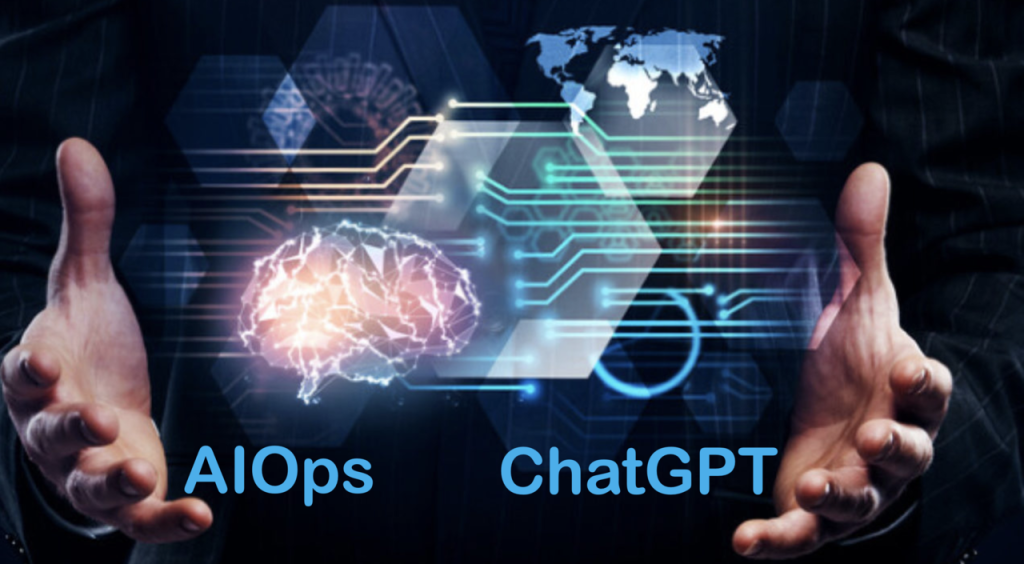Upgrade & Secure Your Future with DevOps, SRE, DevSecOps, MLOps!
We spend hours scrolling social media and waste money on things we forget, but won’t spend 30 minutes a day earning certifications that can change our lives.
Master in DevOps, SRE, DevSecOps & MLOps by DevOps School!
Learn from Guru Rajesh Kumar and double your salary in just one year.

Are you tired of the traditional IT operations that are time-consuming and error-prone? Well, it’s time to switch to AiOps, a new approach to IT operations that leverages artificial intelligence and machine learning algorithms to automate and optimize IT processes.
In this article, we’ll discuss how you can implement AiOps using ChatGPT, an AI-powered chatbot that can help you automate IT operations and improve your team’s productivity.
What is AiOps?
Before we dive into how to implement AiOps using ChatGPT, let’s first understand what AiOps is.
AiOps stands for Artificial Intelligence for IT Operations. It’s a new approach to IT operations that uses AI and machine learning algorithms to automate and optimize IT processes. With AiOps, you can automate repetitive tasks, reduce human errors, and improve the overall efficiency of your IT operations.
How Can ChatGPT Help with AiOps?
ChatGPT is an AI-powered chatbot that can help you automate IT operations and improve your team’s productivity. It uses natural language processing (NLP) and machine learning algorithms to understand user queries and provide relevant responses.
With ChatGPT, you can automate tasks such as incident management, problem management, change management, and service request management. It can also help you analyze IT operations data and provide insights that can help you optimize your IT processes.
Implementing AiOps Using ChatGPT
Now that we understand what AiOps and ChatGPT are, let’s discuss how to implement AiOps using ChatGPT.

Step 1: Define Your Use Cases
The first step in implementing AiOps using ChatGPT is to define your use cases. Identify the IT processes that you want to automate and optimize using ChatGPT. Some examples of use cases include:
- Incident Management: ChatGPT can help you automatically create and assign tickets for incidents.
- Problem Management: ChatGPT can help you identify the root cause of problems and suggest solutions.
- Change Management: ChatGPT can help you automate the change approval process.
- Service Request Management: ChatGPT can help you automate the service request fulfillment process.
Once you have defined your use cases, you can move on to the next step.
Step 2: Train ChatGPT
The next step is to train ChatGPT to understand your use cases. You can do this by providing ChatGPT with sample queries and responses for each use case. This will help ChatGPT learn how to respond to user queries and automate IT processes.
Step 3: Integrate ChatGPT with Your IT Tools
Once you have trained ChatGPT, the next step is to integrate it with your IT tools. ChatGPT should be able to access data from your IT tools and automate IT processes based on the data.
Step 4: Test ChatGPT
Before deploying ChatGPT in a production environment, it’s important to test it thoroughly. Test ChatGPT with different scenarios and use cases to ensure that it’s working as expected.
Step 5: Deploy ChatGPT
Once you have tested ChatGPT, you can deploy it in a production environment. Monitor its performance and make necessary adjustments to optimize its performance.
Conclusion
Implementing AiOps using ChatGPT can help you automate IT operations and improve your team’s productivity. By defining your use cases, training ChatGPT, integrating it with your IT tools, testing it, and deploying it, you can take advantage of the benefits of AiOps and improve your IT operations.